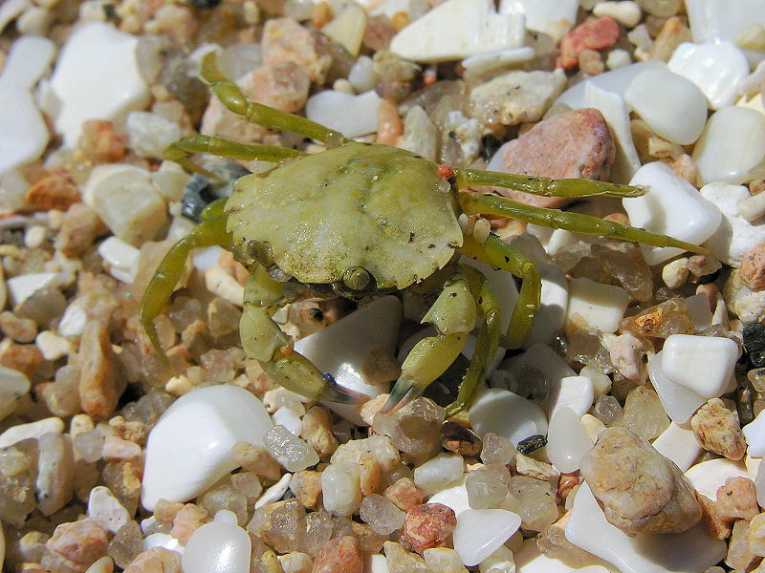Conservationists concerned about controlling invasive species gained new insight recently into the mechanisms by which introduced species colonize new territories.
A new study published in the Proceedings of the National Academy of Sciences explains that invasive species introduced upstream from a given habitat-at the head of a river, for example, or upstream relative to prevailing winds or currents-will colonize new territory much more rapidly, and successfully, than species originally introduced downrange.
Scientists from a variety of institutions, including the University of Georgia, University of New Hampshire, Smithsonian Environmental Research Center and University of Vermont, studied the spread of the European green crab (Carcinus maenas), which has apparently been introduced to North America on at least two separate occasions.
First detected in New Jersey in the early 1800s, the green crab slowly worked its way northwards, against prevailing ocean currents, eventually reaching Nova Scotia, Canada, in 1964. That marked the furthest extent of its range until the 1990s, when the crabs were evidently introduced anew in northern Nova Scotia.
"Our theory was that the old invasion spread as far as it could upstream before fighting the currents made it impossible to spread farther," said Jeb Byers, an associate professor at the University of Georgia.
"We suspected that the new invaders were successful essentially because of physics. Unlike their predecessors, they didn't have to fight their way against the current to spread. They just had to disperse their larvae into the water column and let the current carry them south along the coast." By analyzing the genetics of the crab populations, the scientists were able to determine that the newer crabs have quickly supplanted the older population of invasive crabs.
This insight into the mechanics of infiltration by non-native species may be of benefit to scientists seeking ways to combat incursions by invasive species. "In New England, they're worried," Byers said. "These green crabs have been doing a number on native shellfish. They eat a lot of clams. And they're a very cosmopolitan species-they've now spread all over, to places as far afield as the West Coast of the U.S. and South Africa." And that's got biologists and fisherman alike feeling a bit crabby.
Top Image: Carcinus maenas; Photo Credit: Lmbuga (Luis Miguel Bugallo Sanchez)










